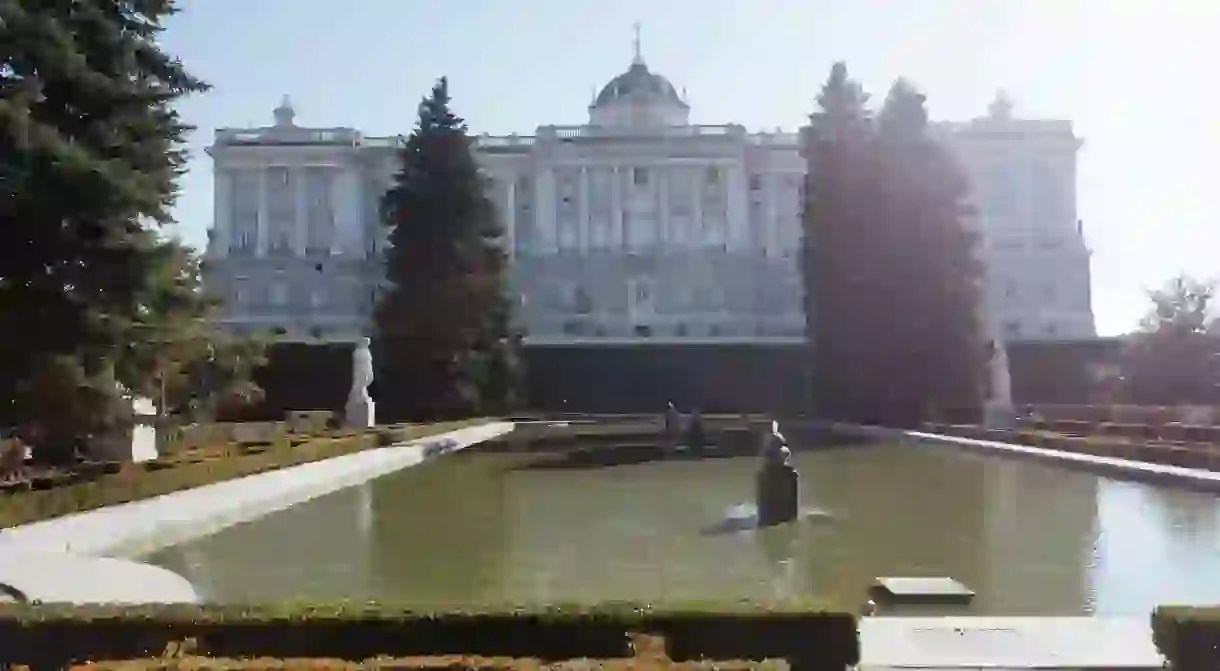A Brief History of the Palacio Real

The largest royal palace in Europe by floor area, Madrid’s Palacio Real is a majestic building with an impressive entrance featuring limestone statues of over 44 Spanish royals. A site of royal lodgings for hundreds of years, a 9th century Muslim castle once stood there, later replaced in the 16th century by a Christian palace. When this palace burned down in 1734, King Philip V ordered the construction of a new palace, which stands to this day.

Many famous architects contributed to the Palacio Real, such as Filippo Juvarra, Giovanni Battista Sacchetti, Ventura Rodríguez, Francesco Sabatini and Martín Sarmiento. Charles III was the first King to occupy the palace, but nowadays the palace is primarily a tourist attraction.

The structure itself is enormous and an awe-inspiring sight (both inside and out). It measures 135,00 square metres and is separated into 3,418 rooms. That’s almost double the size of England’s Buckingham Palace or France’s Versailles. Ionic columns frame the exterior and many statues are located in and around the roof and facade area of the palace. When the facade had a small facelift in 1973, several statues were moved around and a royal coat of arms and angels were added around the famous clock designed by Sabatini.

The palace is surrounded by several park and garden areas including the Sabatini Gardens, a regal park lined with mazes of bushes and perfectly manicured pine trees. Flanking the other side of the palace is the Almudena Cathedral. In the distance, you can also spot Casa de Campo, one of Madrid’s largest green spaces.Visiting the inside will cost you 10 euros, but there are certain days and hours which you can enter for free. Art-lovers can enjoy pieces by Tiepolo, Flandes, Giaquinto, Mengs Goya, Caravaggio Velázquez and others. Besides paintings, you can also check out large collections of porcelain, watches, antique furniture and silver. You can even see the world’s only complete collection of a Stradivarius string quintet. Besides the abundance of salons and bedrooms, there’s also a royal library, a grand staircase, an armory and even a royal pharmacy.

Now a staple of the tourist trade in Madrid, the last time the palace was used for a royal purpose was in 2004, when Prince (who is now king) Felipe and Letizia Ortiz were married in the central courtyard.















